
This work is licensed under a Creative Commons Attribution-ShareAlike 4.0 International License
Getting Started
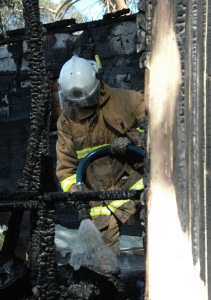 So you've got yourself a new digital camera, and you want to get out and take photos of CFS in action.....
So you've got yourself a new digital camera, and you want to get out and take photos of CFS in action.....
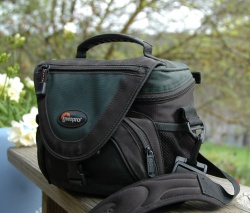 You remember to take your camera to your next call out - a house fire. So there you
are, with an opportunity to take photos...but it is someone's house, the
occupier is standing on the roadway in tears, watching the last of the flames
being extinguished, and it just doesn't feel right to take the camera out and
start snapping away.
You remember to take your camera to your next call out - a house fire. So there you
are, with an opportunity to take photos...but it is someone's house, the
occupier is standing on the roadway in tears, watching the last of the flames
being extinguished, and it just doesn't feel right to take the camera out and
start snapping away.
So the camera just gets tucked away, and photos don't get taken.
But you really want to start taking photos, but not sure where to start?
Here are some tips on getting started in your taking of photos of CFS in action.
Camera
Make sure you have your camera ready for use. It's easy. Put it in your pocket, or kit bag or perhaps the appliance camera lives in the glove box , and it is all already to go.....or is it?
We have had many a firefighter comment - "I was going to get a fantastic shot of the incident, but when I got the camera out, the battery was flat!!"
So ensure your batteries are charged, and that you carry spares. Remember that in many cameras, leaving the battery in the camera, and sitting around for prolonged periods without use, the batteries may discharge over time - so when you want them, they may well be flat!
To avoid this, either use your camera regularly (and you can keep an eye on the battery, and know when it is starting to go flat, and can do something about it) OR if not used very often, store the camera without batteries, and put new batteries in when you are ready to use it. Check the manufacturers instructions for your camera, to work out the best way of ensuring your batteries are always ready for use when you need them!
Make sure you know how to turn your camera on, and can take a picture. You do not have to know everything about how to use your camera - learning the ins and outs of your camera can be gained by taking lots of photos, and practising with your camera. But you must know how to switch it on, and take a basic photo on an auto setting BEFORE you get to an incident.
Taking your first CFS shots
A good place to start on your CFS photo taking is within your own brigade, or if not a member, at your local brigade
The first thing to do is speak to the Captain. Explain that you would like to take some photos of the CFS in action, and gain permission to take photos. Ensure that you discuss what you intend to do with the photos - eg just for use within the brigade, an intention to send some to this website, use in the local paper etc. Discuss what process will be used when photos go outside the brigade. It may be that the Captain (or other person deemed appropriate) checks all photos PRIOR to being sent outside the brigade.
Remember CFS SOP 12.1 - Engaging the media, and SOP 12.2 Photographic / Video Recording of Incidents, should be read in conjunction with the information on this website. It should also be noted that permission to take photos at the State Training Centre at Brukunga must be obtained prior to taking photos, and some restrictions apply to the use of those photos.
If the issues outlined above have been sorted, and permission granted to take photos, you're just about ready to get snapping!!
Perhaps the best place to start with taking photos is at a CFS training session, during daylight. (Daylight photography is much easier than low light photography)
Find a time when the brigade is training during daylight, advise all members that you would like to take photos, and check with members that they are happy for photos to be taken. You may have members in your brigade who are happy for photos to be taken, but not publicly displayed. Some may be happy for their photos to be displayed publicly, as long as their name or face isn't shown.
One thing we have found with the tens of thousands of photos we take at the CFS Promotions Unit, is no-one wants their photo taken, but everyone wants a good photo of themselves!
You only have to look at Facebook, etc to find all those people who have a picture of themselves doing their CFS work, to show how much they like a good photo of themselves!!
Your aim is to take photos in accordance with the Photo Guide. Aim to take photographs of members in action, concentrating on doing their stuff, rather than concentrating on the photographer taking photos!!!
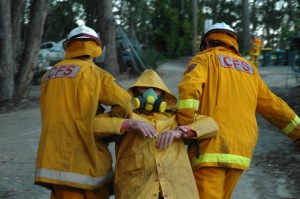
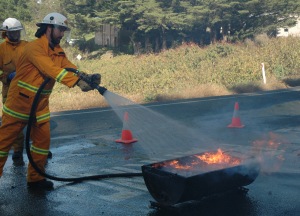
Take LOTS of photos at each session. The more photos you take, the higher the chance you have of getting some good photos. It may be that you take multiple shots of the same subject doing the same task.
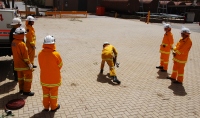
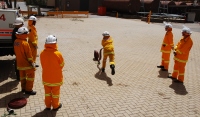
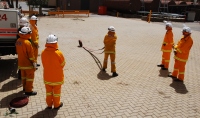
One or two of those photos may work out well, while others are out of focus, or not a good shot. Out of 100 shots, you might get one good shot, a small number of useful shots, and lots of shots that don't show anything useful.
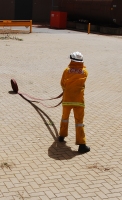
As described in our guide, cutting a photo can change an average photo in to a good photo (See left)
Do not expect to get good or great shots each time you take photos. Don't be disappointed if you don't end up with any good shots - all sorts of circumstances entail that make taking a good shot almost impossible.
Show the photos you take of the members to them - encourage them to give you feedback on your photos - and be prepared for some people not to like your photos. And just because some people may not like your photos, does not necessarily make them bad photos!
Progressing your photo taking
Use whatever opportunities you can to take photos of your own brigade in action at training, and other activities. This might take weeks, months or more to gain confidence and familiarity, and to feel comfortable with taking photos of the brigade.
With permission of your Captain, start taking your camera to incidents, and taking photos at those incidents. Bring your camera out at times you feel comfortable with, and is appropriate with your duties at that incident.
For example, you may respond to a rural incident - so you might bring your camera out when you are at mop up stage - when it is not critical for you to be working at the incident, or at the traffic control point at a long drawn out crash, while you wait for the tow truck.
At the incident, focus on what the crews are doing, rather than the incident itself - eg photograph the firefighter working around the crashed car, rather than the crashed car alone.
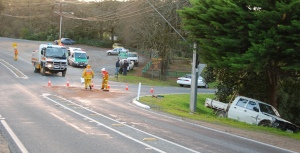
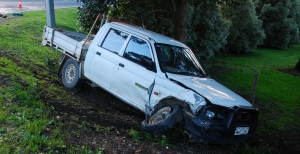
Focus on the crews at work at the incident, rather than the actual incident
Expanding your photo taking
Once you feel comfortable taking photos of your own crews at training and incidents, start expanding your subjects - that is, start taking photos of your neighbouring brigade at either training or incidents.
It might be that you make arrangements with your neighbouring brigade to attend a training session or activity, for the purpose of taking photos.
The aim is to have members comfortable with you taking photos of them AND for them to know that you are taking suitable photographs, and that if photos are to displayed publicly, that they are comfortable with their image being displayed (or with any other conditions that an individual CFS members may place on those photos)
As discussed in our Behaviour Guide, you are legally allowed to take photos of people within a public place, and display those images publicly, without the permission of those within the photo. However, if you are taking photos, particularly when you are part of a crew, you are in a privileged position.
You are right up close, in the middle of the action - and in many cases, much closer to the incident than the members of the public, or media. And hence you have the opportunity to take photos of your colleagues, without their "public face" - and perhaps in a more vulnerable moment.
Don't abuse that privilege by taking photos of members who specifically don't want their photo taken, or displaying images publicly, against the wishes of those members.
If you start doing the wrong thing by taking inappropriate photos of members, or using them contrary to member's wishes, chances are you won't get particularly good photos. Getting a good shot is very difficult if every time you bring the camera out, your subjects start putting their hands in front of their faces, turn their backs on you or try their best to get out of the shot!




